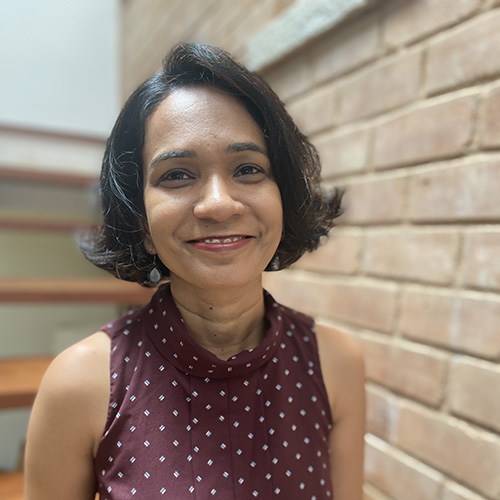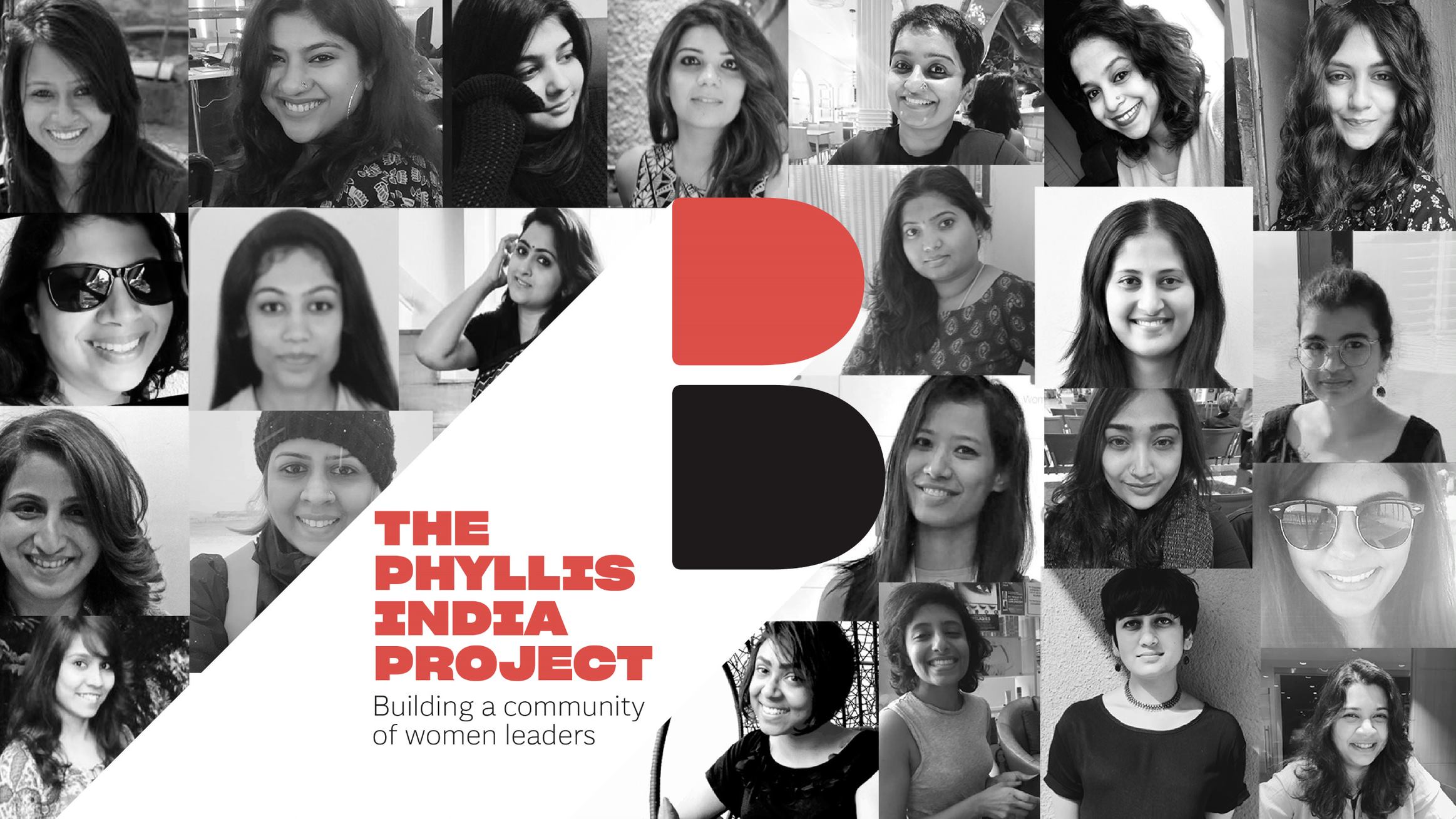PR / News
Vanaja Pillai: How we moved from intent to action with the Phyllis India Project
24 March 2022
Vanaja Pillai
Head of Diversity, Inclusion and Impact
DDB Mudra Group, India
Vanaja has been recently mandated with the DEI agenda at the DDB Mudra Group. This came on the back of the successful creation and execution of the Phyllis India Project - one of the industry’s most comprehensive and intense leadership development programs with consistent and deep interventions, to help prepare DDB’s women talent for leadership. The program got recognised by Campaign India as the best Women Leadership Program, and Vanaja won the Mentor of the Year Award as the driving force behind the initiative.
Bringing together her passion for diversity, and two decades of experience in business, Vanaja will now be focussed on growing a diverse and inclusive workplace, spanning talent acquisition, retention, training and outreach to talent in underrepresented communities.
Prior to this, she headed the Bengaluru business of 22feet Tribal WW where she was responsible for managing and growing the team’s impressive client roster, and led the unit successfully through a particularly difficult transition in 2019.
Vanaja (previously Executive Vice-President, OgilvyOne - Bengaluru) comes with experience in business management and marketing communications; with a large part of it focussed on setting up practices across different functions including design & creative delivery, public relations, business communications, advertising and digital marketing. She has also worked with a range of startups across the education and technology sectors, and enjoys converting ideas into strong businesses.
An accomplished writer, Vanaja’s deep empathy of women’s struggles and the drive needed to push the envelope on gender equality is reflected in her collection of short stories, Omana, published in 2021.
How we moved from intent to action with the Phyllis India Project
Indra Nooyi, Former CEO of PepsiCo, recently said the best way to get a seat at the table, is to pull up a chair.
For several young women across the globe this would be inspiring. The idea that pulling up a chair – without being invited – is an option, may have never occurred to them until this moment. And that’s the power of storytelling and sharing journeys. It allows women to see possibilities that they never saw previously, in the experiences and truths of others who are perhaps a few years ahead of them.
In 2020, we at the DDB Mudra Group in India, decided to put concerted effort behind addressing our gender ratio gap, especially at the leadership table. Inspired by Phyllis Robinson – DDB Worldwide’s first copywriter and the first female copy chief in U.S. history – the global chapter had started two years previously. But we believed what was needed for genuine impact was consistent, comprehensive, and multi-pronged efforts that helped our women talent experience change and growth more regularly.
And that’s how the Phyllis India Project was created – a combination of upskilling and training, personalised mentoring, inspiration stories, and community building, all laid on the foundation of a solid understanding of each individual, their needs and life stage.
It has been an exhilarating journey watching twenty-five diverse and talented women find wings and their voice, purely inspired by the personal interest shown in them by their managers, the company, their mentors and each other. We have had a 5% improvement in the gender ratio, with fifteen of the participants having experienced growth in their role and portfolio. But the most delightful sign of all, was what some of the leaders observed - through the course of the Phyllis program, there has been a definite heightening of the presence and voice of women in the DDB corridors. That to me, as someone who has put my heart and soul into this initiative, is the most heart-warming and inspiring outcome.
As we start off the Phyllis India 2022 journey, we recommit ourselves to doing everything better with another set of talented women. And here are a few thoughts that have now become guideposts :
1. This is important work to do not just because it is the right thing to do. With the challenges the advertising business faces especially in markets like India, perhaps it is time a new breed of people took over the reins. Start thinking long term investments vs immediate returns, talent vs resources, client solutions vs agency strengths. Diversity is the key to brining this new thinking to the proverbial table.
2. Everyone has a role to play, so cast the net wide. You are a supporter or a detractor by virtue of being in this world. Getting every leader in the company involved in some form – as a mentor, facilitator, or trainer – was an essential part of getting commitment from the top. It encouraged them to listen, explore and try to understand the many and real challenges women continue to face in our pre-dominantly male-entitled world. And hopefully not judge affirmative action to balance the scales a teeny-weeny bit.
3. Ensure a disproportionate focus on hiring women talent. While ‘reservation’ is not the solution, to out-damage centuries of patriarchy, an incredible amount of effort needs to go into identifying, enabling, and strengthening women talent across board. And that starts with a disproportionate hiring goal, so that at some point the numbers start making sense. Don’t look at the exceptions, look at the rule. Look for, and encourage women talent in media, technology, creative leadership and the boards of agencies.
4. Sponsor women into leadership. The chances of strong, talented and successful women staying on in advertising heavily depends on them being able to see role models in their workplaces. There needs to be concerted effort to train, prepare, support and promote women into influential positions. The biggest payoff I have ever received in my career, is the girls who have told me that watching me run a business, and take those decisions, gave them hope and an ambition. Succession planning to proactively change the gender ratios in leadership is critical.
5. Mentorship is truly powerful. But mentoring programs fail often because leaders think of being a mentor in a formal company mentoring program as their right. It shouldn’t be. The role of a mentor needs to be earned. Let’s not cater to people’s egos in mentoring programs. Only enrol mentors who have something to give – in terms of time, skills and interest in the cause. Be brutal in that choice. Additionally, mentorship needs to be addressed holistically. It cannot be a one-time thing, or a one-mentor-for-all solution. Identify specific needs and find a suitable mentor.
6. Get women to tell their stories. Hearing from a diverse set of women leaders had an effect on our Phyllis participants that we could not have imagined. In their journeys, our women found relatability, diverse leadership personalities, a community and most importantly genuine inspiration – month after month, without fail.
7. Changing the codes in our leadership styles, work environments and definitions of success is key. While we consciously bring more women into workplaces, and strengthen their chances of growth and success, our corporate environments also need to evolve. It cannot be said better than how Avivah Wittenberg-Cox puts it in her Forbes article of March 2020 on 4 Phases Of Women’s Careers; we need to relook at : “…typical career graphs have been defined decades ago by men for other men with non-working wives.”
The Phyllis India project was our way of telling our women to pull up that chair. If your company is not doing something proactively, committedly and passionately to further this important narrative, ask for it. And do reach out to us in India if we can help.

